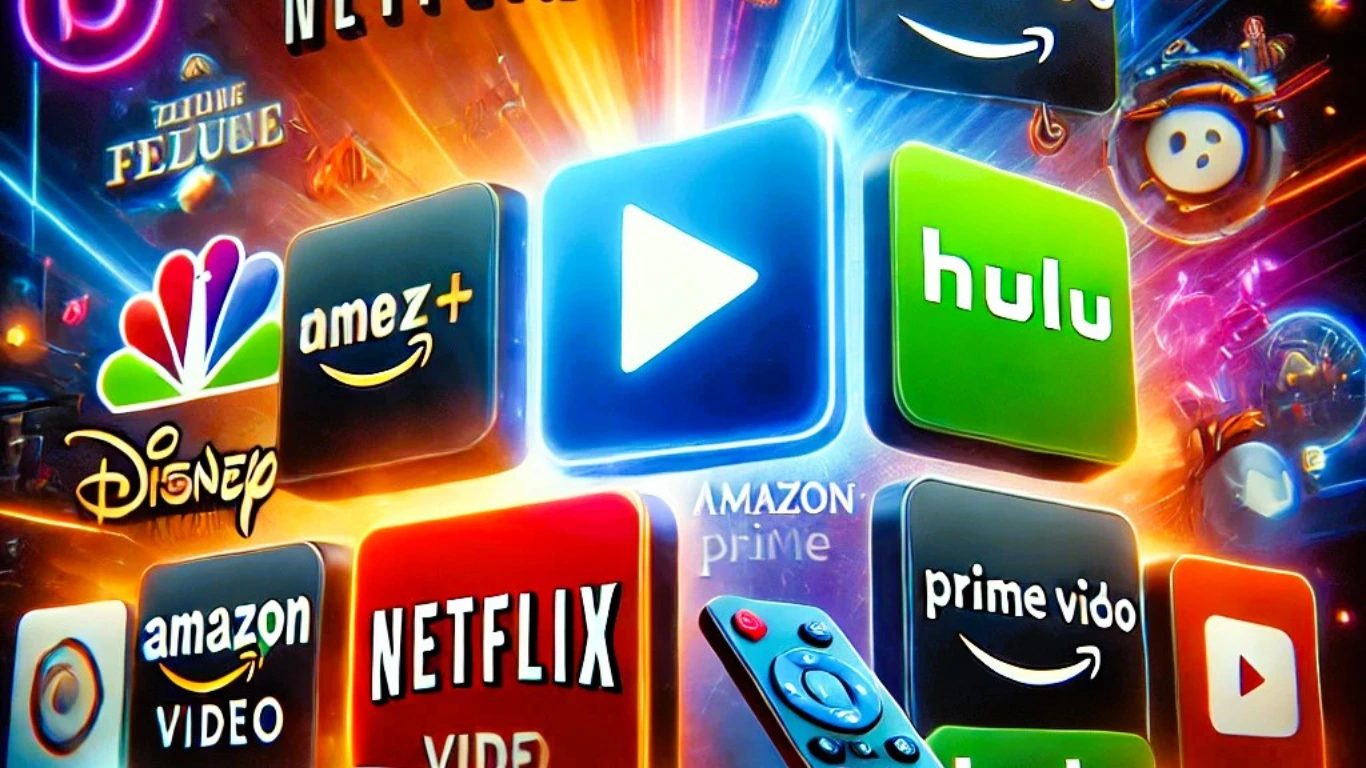“Discover why streaming platforms like Netflix, Disney+, and Max are reducing content in 2024. Learn about financial pressures, licensing costs, ad-supported models, and subscriber retention strategies reshaping streaming libraries.”
1. Financial Pressures and Profit Goals
Many Streaming Platforms are struggling to turn a profit. Platforms like Warner Bros. Discovery, Disney+, and others have billion-dollar losses, leading them to reduce content to save money. By reducing less popular titles, Streaming Platforms can avoid high residual and licensing fees associated with keeping shows and movies available. This move allows services to allocate resources toward content that draws new subscribers or retains existing ones, like blockbuster series and popular franchises, instead of maintaining an extensive but underused catalog (TechRadar, Cord Cutters News).
2. Licensing and Content Ownership Challenges
In an increasingly competitive environment, the cost of licensing popular third-party content has risen sharply. For instance, Warner Bros. Discovery paid $425 million to license Friends for its own platform. Now, many streaming services are opting to produce and promote their own exclusive content, which they can control and monetize without the added licensing costs. This shift away from licensed content means services are more likely to pull third-party titles as their contracts expire, contributing to shrinking libraries (Cord Cutters News, The Streamable).
3. Emphasis on “Quality over Quantity”
Following the Hollywood writers’ and actors’ strikes in 2023, production schedules are still catching up, which means fewer new shows and Films for streaming. Netflix, for instance, has adjusted its content strategy, focusing on fewer but higher-quality releases. By reducing catalog size, streaming platforms aim to enhance user satisfaction through curated content rather than an overwhelming volume of shows and movies. This selective approach also aims to keep production costs down while potentially increasing user engagement with fewer but better-promoted titles (The Streamable, Fast Company).
4. The Impact of Content Purges on Tax Savings
For some platforms, removing specific titles offers a financial benefit beyond direct cost savings. Companies like Disney+ and Warner Bros. Discovery can “write down” or remove content as a tax-saving measure. When titles are removed permanently, companies can list these assets as losses, which reduces their overall tax burden. This approach has made content purges a practical strategy, even though it can frustrate users hoping for long-term access to all content (TechRadar).
5. Ad-Supported Models and Cost Management
As subscription growth slows, streaming services are increasingly turning to ad-supported tiers, which require less content per tier to maintain profitability. Ad-supported versions often offer more limited catalogs than premium, ad-free tiers. Disney+ and Netflix have introduced ad-supported options that provide users with lower subscription fees in exchange for commercials, reducing the need to maintain a massive, costly library. This trend toward ad-supported streaming is reshaping how platforms allocate content budgets (Marketplace, Fast Company).
6. Rising Subscriber Churn and Content Consolidation
Subscriber “churn”—the rate at which users unsubscribe—has increased as viewers hop between platforms to binge specific shows. This has led companies to prioritize fewer but “sticky” shows, like popular franchises or exclusive originals, to retain subscribers. Content consolidation, where platforms license content to each other (e.g., Paramount content on Netflix), is also becoming more common to attract audiences without expanding individual libraries. Consolidation allows companies to share costs while maximizing content impact (Marketplace, Cord Cutters News).
7. Shifts Toward Streaming Bundles
Streaming bundles are emerging as another solution to manage costs and retain subscribers. Companies are bundling services with others—for instance, Disney’s bundle of Disney+, Hulu, and ESPN+—or partnering with telecom providers to offer discounted plans. These bundles reduce the pressure on each platform to maintain a huge catalog and instead leverage shared content across multiple services to retain users (Fast Company).
Table: Factors Behind Shrinking Streaming Libraries in 2024
| Factor | Description |
|---|---|
| Financial Pressures | Reducing content saves costs on residuals and maintenance. |
| Licensing Costs | Platforms prioritize owned content over costly third-party licenses. |
| Focus on Quality over Quantity | Selective content strategy improves user satisfaction and cost efficiency. |
| Tax Savings from Content Purges | Content removal allows companies to write down losses for tax benefits. |
| Ad-Supported Models | Reduced catalogs in ad-supported tiers decrease costs while accommodating ads. |
| Subscriber Churn Management | Keeping a smaller, high-demand catalog helps retain subscribers amid increasing churn rates. |
| Streaming Bundles | Bundling services with others lessens the need for extensive individual catalogs. |
Conclusion
As streaming platforms seek profitability and adapt to shifting user demands, their strategies are moving toward leaner, curated catalogs. With cost considerations, subscriber retention tactics, and the rise of ad-supported models, streaming services are rethinking their expansive libraries. While these changes might mean fewer choices, they’re ultimately aimed at delivering more sustainable and focused viewing experiences for subscribers.
Key Takeaways
- Cost-Cutting: Reducing catalogs helps platforms manage costs, especially during financially challenging times.
- Content Ownership: Platforms are shifting from licensed to original content, leading to a decrease in third-party titles.
- Ad-Supported and Bundling Options: New pricing models help retain subscribers but reduce the necessity for vast catalogs.
- Focus on User Retention: Smaller but more engaging catalogs aim to enhance user loyalty in an oversaturated market.
FAQs
1. Why do Streaming platforms remove popular shows?
Shows are sometimes removed due to licensing costs, expired contracts, or strategic shifts to emphasize exclusive content.
2. Are purged shows gone forever?
Not always—removed shows may reappear on other platforms or return as licensed content on the original service.
3. How does bundling affect the size of streaming catalogs?
Bundling allows Streaming platforms to offer combined content libraries, reducing pressure to maintain large individual catalogs.
4. Is this trend expected to continue?
Yes, experts predict that streaming services will keep optimizing their content offerings, possibly leading to more consolidation.
5. Will ad-supported plans always have smaller catalogs?
Typically, ad-supported plans focus on high-demand shows, so they often maintain smaller catalogs than premium, ad-free tiers.
